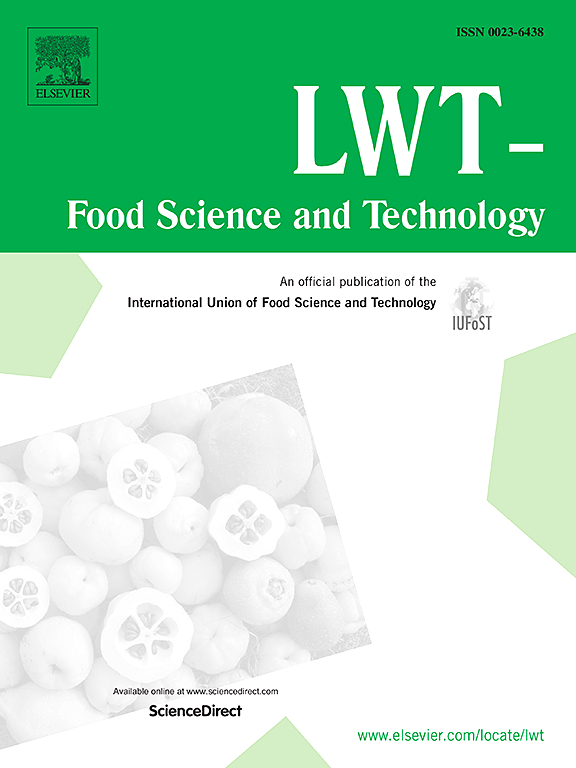Improvement of chemical composition, physical properties and crystallization characteristics of palm stearin and rice bran oil blends by enzymatic interesterification: Potential base oils in fast-frozen food
IF 6
1区 农林科学
Q1 FOOD SCIENCE & TECHNOLOGY
引用次数: 0
Abstract
In order to reduce the enzymatic interesterification cost of base oil in fast-frozen food and improve its physicochemical properties and nutritional value, effects of reaction conditions on the properties of the interesterified fats (IEFs) from palm stearin (PS) and rice bran oil (RBO) were evaluated. The performed conditions were as follows: Thermomyces lanuginosa lipase (TL IM) as catalyst, reaction temperature 50 °C, enzyme load 6%, reaction time 2 h. The IEFs of PS and RBO in different ratios were prepared under these conditions, and their chemical composition, physical properties, and crystallization characteristics were compared with those of the physical blends. Results showed that no trans fatty acids, abundant phytosterols and oryzanol were detected in all the IEFs, suggesting an improvement in nutritive properties. In particular, the IEFs (4:6, 5:5, 6:4, and 7:3, PS:RBO) had relatively low contents of SFA (39.28%–53.01%) and high contents of SUU- and SUS-type TAGs, resulting in lowering slip melting points (35.6–44.9 °C) and good solid fat content range (12.1%–34.3%) at 20 °C with mostly β′ crystals. Thus, this paper provides a simple and low-cost enzymatic interesterification method for preparing high-quality base oil in fast-frozen food.
求助全文
约1分钟内获得全文
求助全文
来源期刊

LWT - Food Science and Technology
工程技术-食品科技
CiteScore
11.80
自引率
6.70%
发文量
1724
审稿时长
65 days
期刊介绍:
LWT - Food Science and Technology is an international journal that publishes innovative papers in the fields of food chemistry, biochemistry, microbiology, technology and nutrition. The work described should be innovative either in the approach or in the methods used. The significance of the results either for the science community or for the food industry must also be specified. Contributions written in English are welcomed in the form of review articles, short reviews, research papers, and research notes. Papers featuring animal trials and cell cultures are outside the scope of the journal and will not be considered for publication.
 求助内容:
求助内容: 应助结果提醒方式:
应助结果提醒方式:


